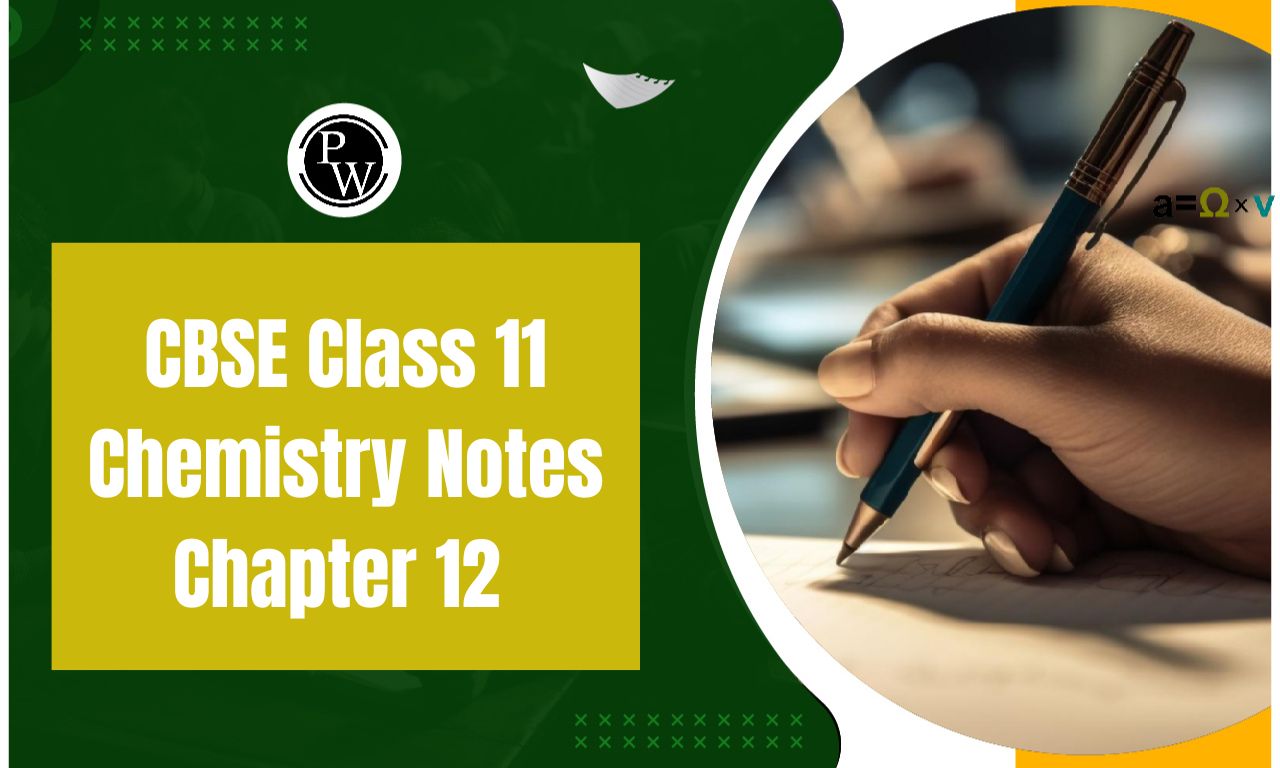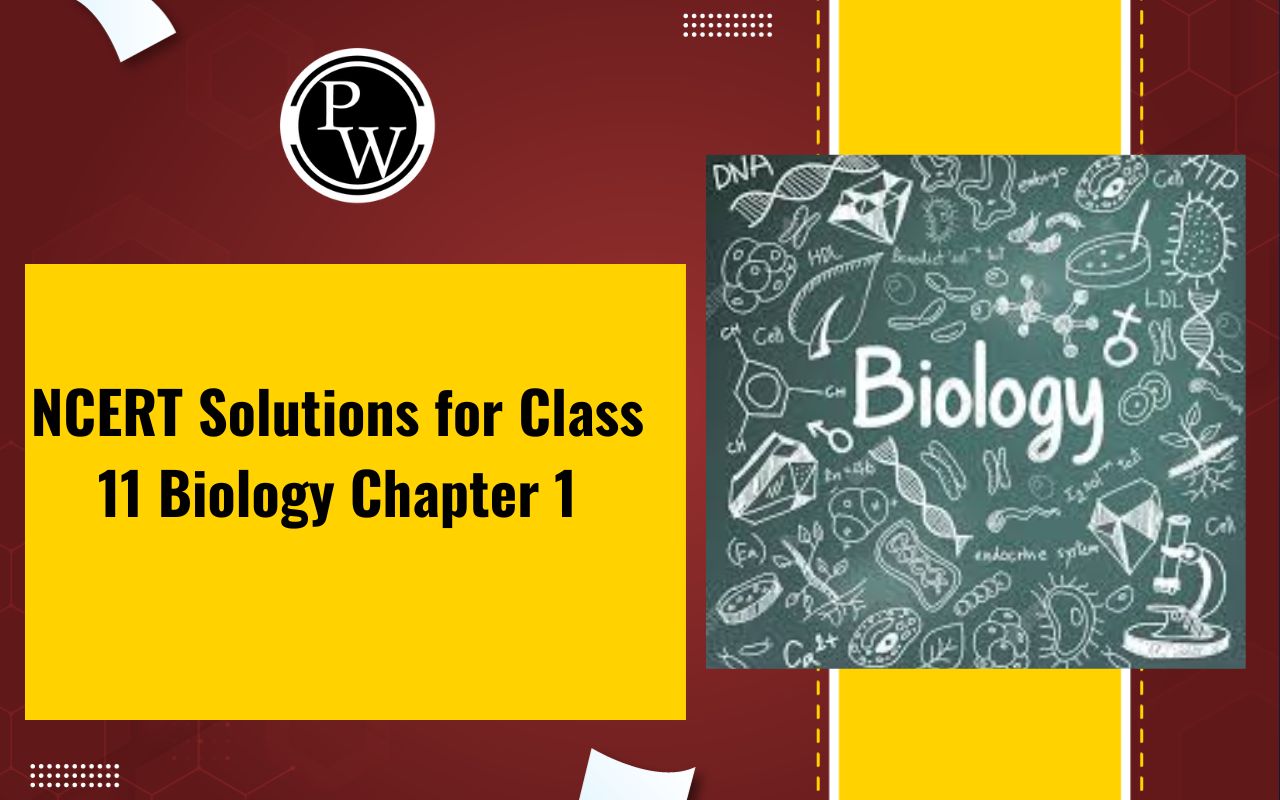
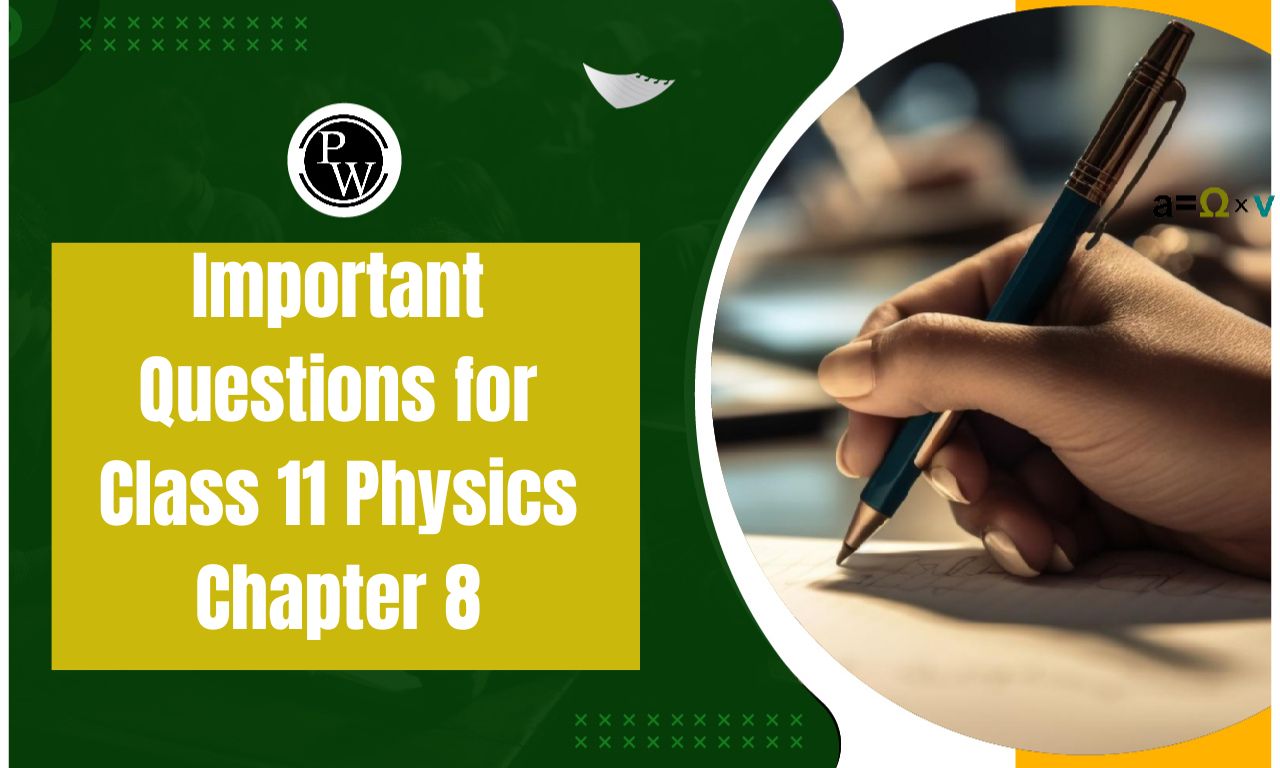
Important Questions for Class 11 Physics Chapter 8: Chapter 8 of Class 11 Physics, Mechanical Properties of Solids, explores the behavior of solids under external forces. Key topics include stress and strain, Hooke's Law, elastic moduli (Young's modulus, bulk modulus, and shear modulus), and Poisson's ratio. It also covers concepts like elasticity, plasticity, and the stress-strain curve, highlighting the proportional limit, yield point, and ultimate tensile strength.
Applications of elasticity in engineering and construction are discussed. Important questions focus on deriving stress-strain relationships, calculating elastic constants, solving problems involving load and deformation, and understanding the significance of elastic behavior in real-life scenarios. These questions strengthen problem-solving and analytical skills.Important Questions for Class 11 Physics Chapter 8 Overview
Important Questions for Class 11 Physics Chapter 8 Mechanical Properties of Solids, explores the behavior of solids under external forces. Key topics include stress and strain, Hooke's Law, elastic moduli (Young's modulus, bulk modulus, and shear modulus), and Poisson's ratio. It also covers concepts like elasticity, plasticity, and the stress-strain curve, highlighting the proportional limit, yield point, and ultimate tensile strength. Applications of elasticity in engineering and construction are discussed. Important questions focus on deriving stress-strain relationships, calculating elastic constants, solving problems involving load and deformation, and understanding the significance of elastic behavior in real-life scenarios. These questions strengthen problem-solving and analytical skills.Important Questions for Class 11 Physics Chapter 8 PDF
Below, we have provided a PDF containing important questions for Class 11 Physics Chapter 8: Mechanical Properties of Solids. This comprehensive set of questions covers key topics, including stress, strain, elastic moduli, and applications of Hooke's Law. Designed to help students prepare effectively for exams, these questions ensure a thorough understanding of the concepts. Download the PDF to access these crucial practice questions and enhance your Physics preparation.Important Questions for Class 11 Physics Chapter 8 PDF
Important Questions for Class 11 Physics Chapter 8 Mechanical Properties of Solids
Below is the Important Questions for Class 11 Physics Chapter 8 Mechanical Properties of Solids - 1. The stretching of a coil spring is determined by its shear modulus. Why?Ans: Stretching of coil spring is determined by shear modulus as when a coil spring is stretched, neither its length nor its volume or its shape changes.
2. The spherical ball contracts in volume by 0.1% when subjected to a uniform normal pressure of 100 atmosphere. Calculate the bulk modulus of material of the ball.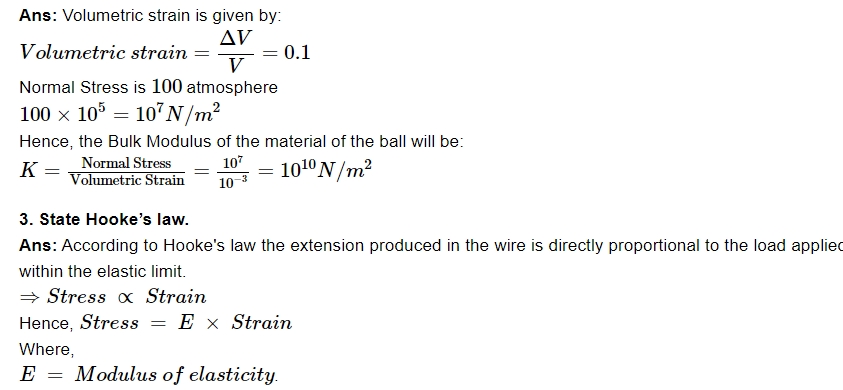
4. What are ductile and brittle materials?
Ans.
Ductile materials are those that exhibit a wide plastic range that extends beyond the elastic limit. Materials that are ductile include iron, copper, and so forth. Ductile materials are those that exhibit very little plastic range beyond the elastic limit. Glass, cast iron, and other materials are examples of brittle materials.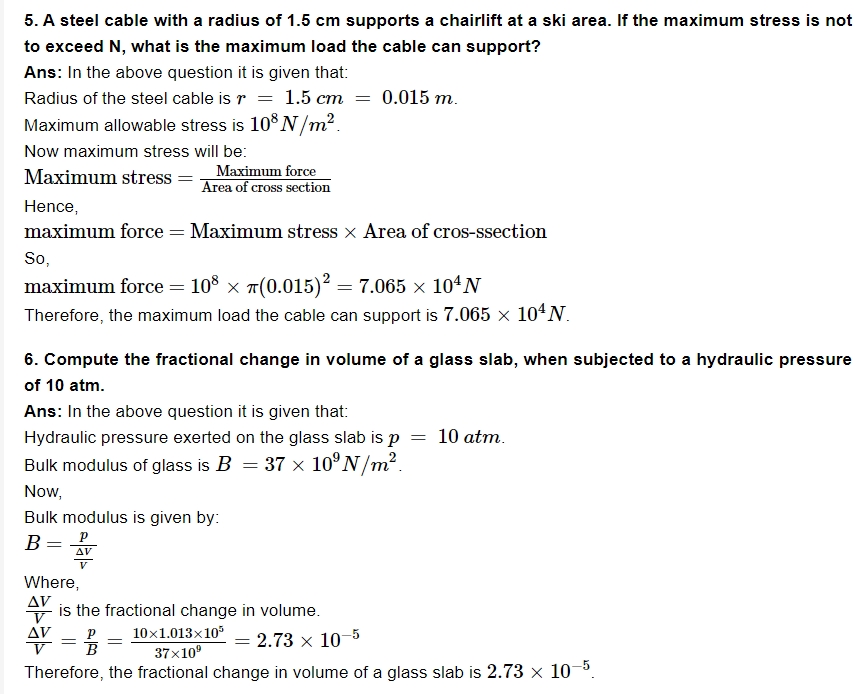
2 Marks Questions
1. Write the characteristics of displacement.
Ans: Following are the characteristics of displacement:
(1) Displacement is a vector quantity having both magnitude and direction.
(2) Displacement of a given body can be positive, negative or zero.
4. What causes variation in velocity of a particle?
Ans: Variation in velocity of a particle happens when:
(1) magnitude of velocity changes
(2) direction of motion changes.

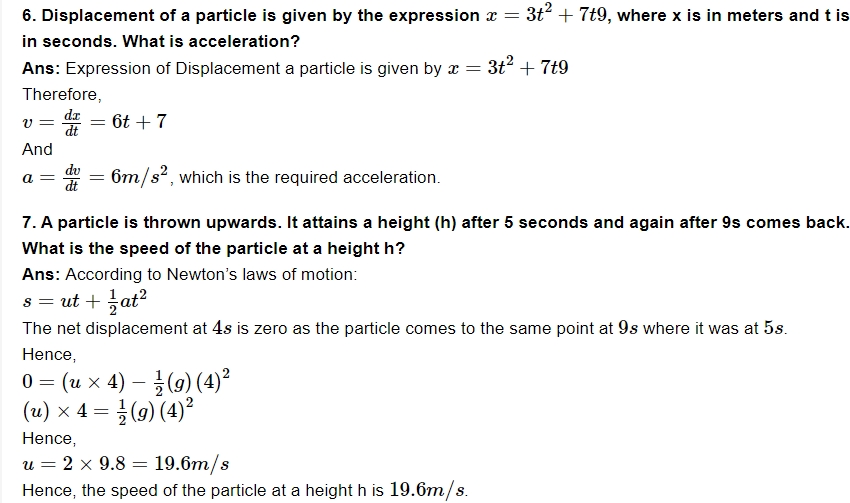
8. A balloon is ascending at the rate of 4.9m/s. A pocket is dropped from the balloon when situated at a height of 245m. How long does it take the packet to reach the ground? What is its final velocity?
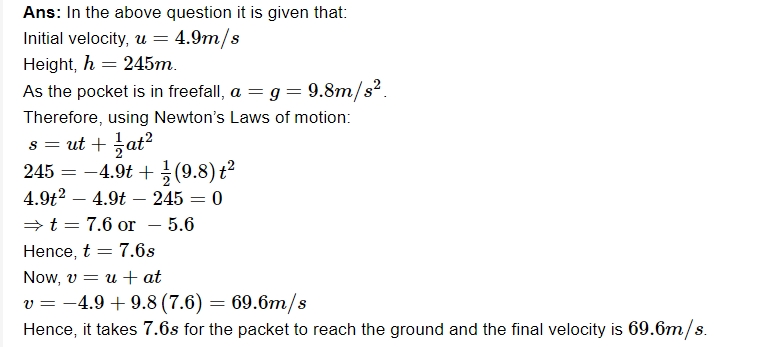
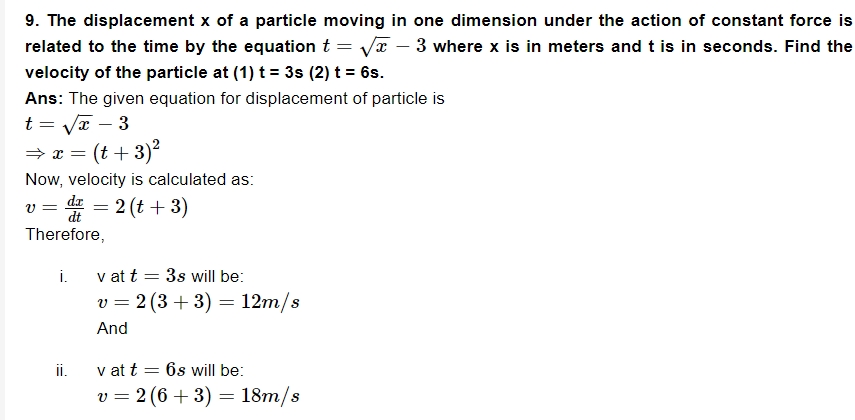
10. A hollow shaft is found to be stronger than a solid shaft made of the same material. Why?
Ans. The torque required to produce a given twist in a hollow cylinder is greater than that required to produce in a solid cylinder of same length and material through the same angle. Hence, a hollow shaft is found to be stronger than a solid shaft made of equal material.
3 Marks Questions

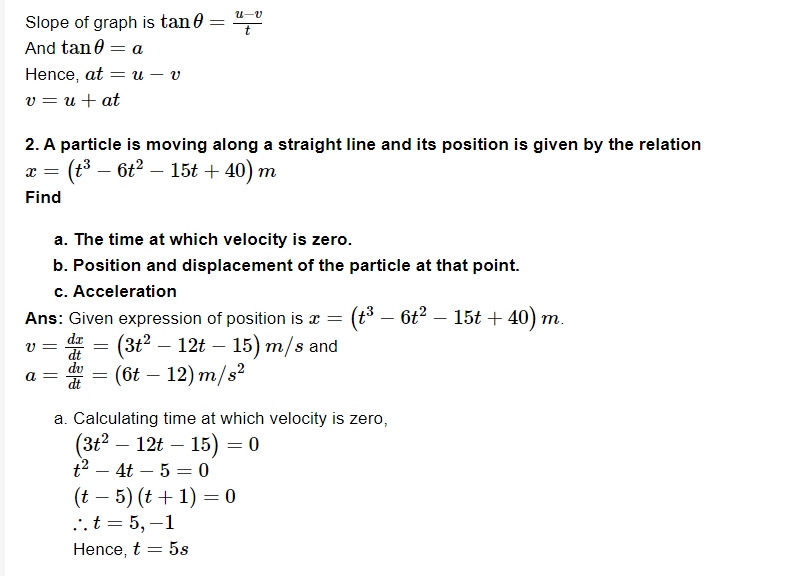
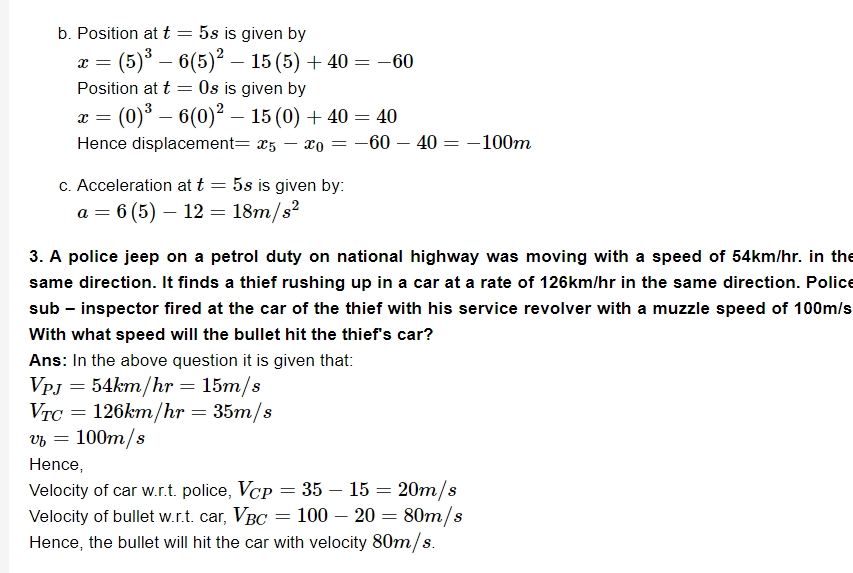
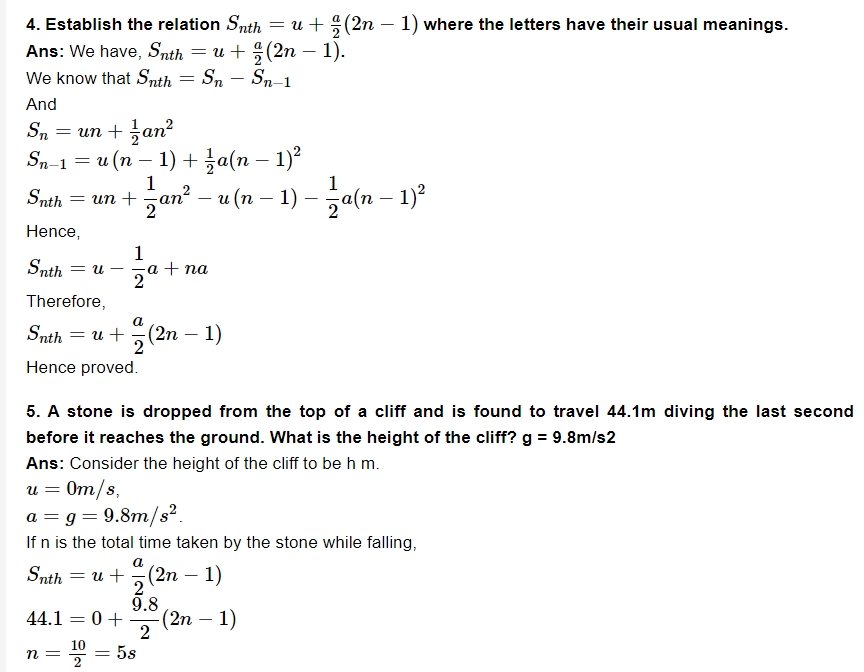
6. Establish from the velocity time graph, a uniform accelerated motion.
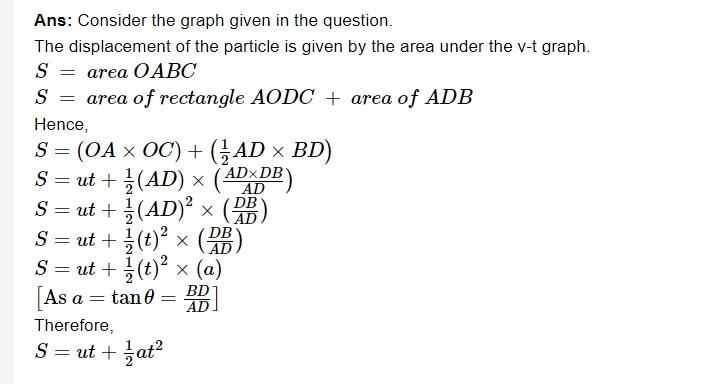
7. (a) Define the term relative velocity.
Ans: The relative velocity of any object A with respect to object B is termed as the time rate of change of position of A with respect to B.
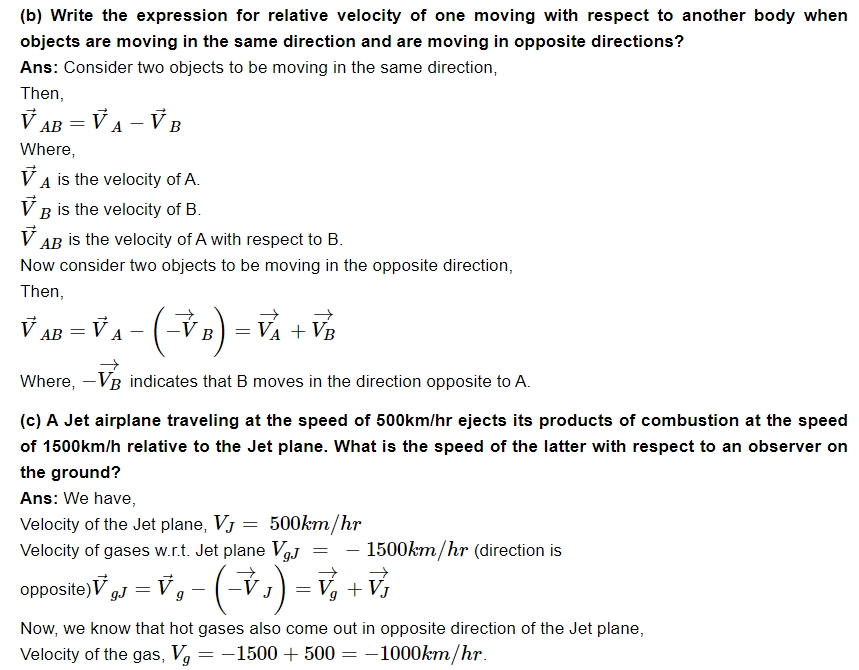
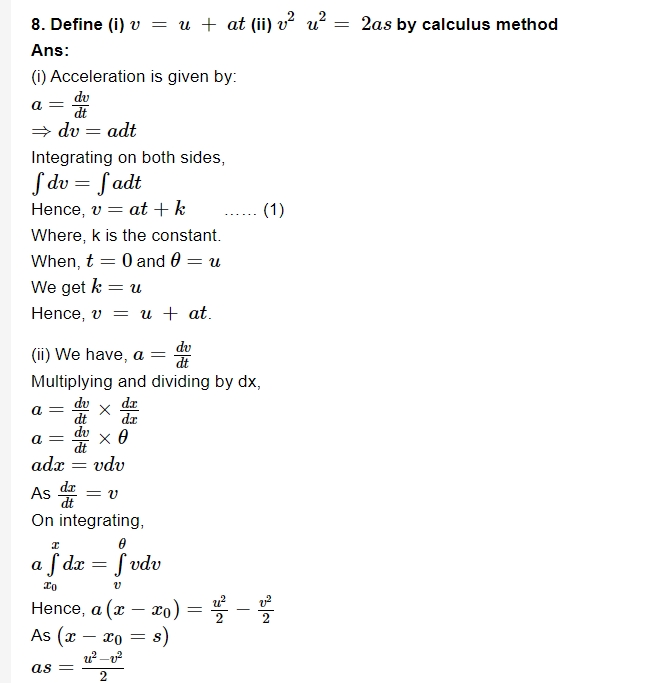
9. Explain:
1) Elastic Body 2) Plastic Body 3) Elasticity.
Ans:
-
Elastic Body: An elastic body is defined as the body which completely regains its original configuration immediately after the removal of deforming force on it. For example, Quartz and phosphor Bronze.
-
Plastic Body: A plastic body is defined as the body which does not regain its original configuration at all on the removal of deforming force, however the deforming force may be. For example, Paraffin wax.
-
Elasticity: Elasticity is defined as the property of the body to regain its original configuration, when the deforming forces are removed.
Benefits of Using Important Questions for Class 11 Physics Chapter 8
Using important questions for Class 11 Physics Chapter 8, Mechanical Properties of Solids, offers several benefits:Focused Preparation: The questions target essential topics like stress, strain, and elastic moduli, streamlining your study efforts.
Exam-Oriented Practice: These questions align with exam patterns, helping you anticipate frequently asked concepts.
Concept Clarity: Solving these questions enhances your understanding of fundamental principles and applications.
Time Management: Practice improves speed and accuracy for tackling exam questions effectively.
Confidence Boost: Regular practice builds confidence and reduces exam-related anxiety.
Important Questions for Class 11 Physics Chapter 8 FAQs
What is the significance of mechanical properties of solids?
What is the mechanical behavior of a solid?
What is stress in mechanical properties of solids?
Are mechanical properties of solids hard?





